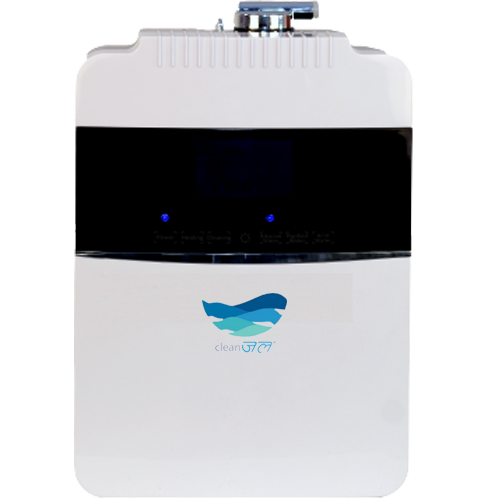Water Purifier Maintenance Tips: Keeping Your Unit In Top Shape. Water purifiers play a vital part in icing access to clean and safe drinking water. Still, like any other appliance, they bear regular conservation to perform optimally and give stylish quality water.
In this article, we will give you with easy- to- follow conservation tips that will help you keep your water cleaner in top shape. By following these guidelines, you can extend the lifetime of your unit, maintain its effectiveness, and ensure the continued force of pure and healthy water for you and your family.
Read this article on the top of Water Purifier Maintenance Tips: Keeping Your Unit In Top Shape to know more about water purifiers and their maintenance.
Water Purifier Maintenance Tips: Keeping Your Unit In Top Shape


- Read the stoner Homemade
Before starting the conservation process, it’s pivotal to completely read the stoner primer handed with your water cleaner. This will help you understand the specific conservation conditions and procedures recommended by the manufacturer. It’ll also give you essential safety information and troubleshooting tips.
- Regular Sludge Changes
The pollutants in your water cleaner are responsible for removing contaminations and pollutants from the water. Over time, these pollutants come impregnated and lose their effectiveness. It’s important to follow the manufacturer’s recommendations and change the pollutants at regular intervals.
- Clean deposition Pollutants
Deposition pollutants are designed to capture larger patches similar to beach, dirt, and rust. These pollutants can come congested over time, affecting the water inflow and the effectiveness of your cleaner. To clean deposition pollutants, turn off the water force, remove the sludge casing, and wash the sludge under running water. Make sure to remove any accumulated debris, and if necessary, replace the sludge.
- Maintain RO Membrane
Reverse Osmosis ( RO) membranes are essential factors of numerous water purifiers. They remove dissolved contaminations and pollutants through a semi-permeable membrane. To maintain the RO membrane, regularly check the TDS( Total Dissolved Solids) position of the purified water using a TDSmeter.However, consider replacing the RO membrane as advised by the manufacturer, If the TDS position exceeds the recommended range.
- Clean the Storage Tank
The storehouse tank in your water cleaner can accumulate sediments and bacteria over time, affecting the quality of the stored water. To clean the tank, drain all the water from it and drop the innards with a mild soap result. wash completely to remove any residue, and sanitize the tank by adding an admixture of water and many drops of chlorine bleach. subsequently, fill the tank with clean water, let it sit for many twinkles, and also drain and refill it.
- Check for Leaks
Regularly check your water cleaner for any signs of leaks. This includes checking the connections, pipes, and fittings. However, instantly address them to help water damage and ensure the proper functioning of your unit, If you notice any leaks. Replace the damaged corridor or seek professional help if necessary.
- Clean the Exterior
Drawing the surface of your water purifier isn’t just about aesthetics; it also helps maintain its performance. Use a soft cloth and a mild cleaning result to wipe the external shells, icing you do not get water into any electronic factors. Regular cleaning prevents dust and smut from accumulating, keeping your unit in good condition.
Why it's important to keep your water purifier clean?
Keeping your water purifier clean is important for several reasons.
- Effective Purification
Water purifiers are designed to remove contaminations, pollutants, and potentially dangerous substances from water. Over time, these contaminations can accumulate in the pollutants, membranes, or other sanctification factors of the system, reducing its effectiveness. Regular cleaning ensures that the cleaner operates at its optimal capacity, maintaining the quality of purified water.
- Health and Safety
Clean water is essential for maintaining good health. However, bacteria, and algae, If your water cleaner isn’t gutted regularly. Drinking water defiled with these microorganisms can lead to colorful health issues, including gastrointestinal problems, nausea, and diarrhea. By drawing your water cleaner, you minimize the threat of microbial impurity and ensure the safety of the water you consume.


- Dragged Lifespan
Water purifiers, like any other appliances, bear conservation to extend their lifetime. Accumulated dirt, deposition, or mineral deposits can beget clogging, reduce the effectiveness of the cleaner, and indeed damage its factors. Regular cleaning helps help with similar issues and ensures that the cleaner functions optimally for an extended period.
- Advanced Taste and Odor
Over time, contaminations in the water can affect its taste and odor. However, these contaminations can make up and affect unwelcome- tasting or foul-smelling water, If your water cleaner isn’t gutted regularly. By keeping the cleaner clean, you enhance the taste and odor of the purified water, making it more pleasurable to drink and use in cuisine.
- Cost Savings
Neglecting the conservation and cleaning of your water cleaner can lead to reduced effectiveness and increased energy consumption. also, when the pollutants or membranes come congested or damaged, they may need to be replaced more constantly. Regular cleaning helps help with similar issues, reducing the need for repairs or unseasonable relief and saving you plutocrats in the long run.
To ensure that you maintain a clean water cleaner, follow the manufacturer’s instructions regarding cleaning procedures and schedules. It’s also important to regularly replace the pollutants or membranes as recommended.
Conclusion
Proper conservation of your water purifier is pivotal to ensure its life and the product of clean, safe drinking water.
































